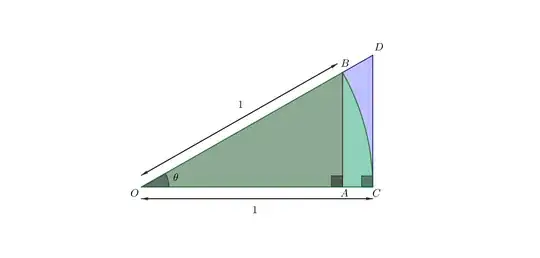So, I'm trying to prove the following assertion:
$\lim_{x \to 0} \frac{\sin(x)}{x} = 1$
Proof Attempt:
Let $\epsilon > 0$. Then, we have to show that:
$$\exists \delta > 0 : 0 < |x| < \delta \implies |\frac{\sin(x)}{x} - 1| < \epsilon$$
Let us consider the following:
$$\cos(x) < \frac{\sin(x)}{x} < 1$$
if $0 < |x| < \frac{\pi}{2}$. So, we have:
$$0 < 1 - \frac{\sin(x)}{x} < 1 - \cos(x) = 2\sin^2(\frac{x}{2}) \leq 2 |\sin(\frac{x}{2})| \leq |x| < \delta$$
That's, of course, assuming that $0 < |x| < \frac{\pi}{2}$.
If $\epsilon \geq \frac{\pi}{2}$, then let $\delta = \frac{\pi}{2}$. This would ensure that $1-\frac{\sin(x)}{x}$ is still greater than 0.
If $\epsilon < \frac{\pi}{2}$, then let $\delta = \epsilon$. This would still mean that $0 < |x| < \delta < \frac{\pi}{2}$ so the inequality above would still be satisfied.
This proves the given assertion.
Could someone check my proof above and see if it works or not?
